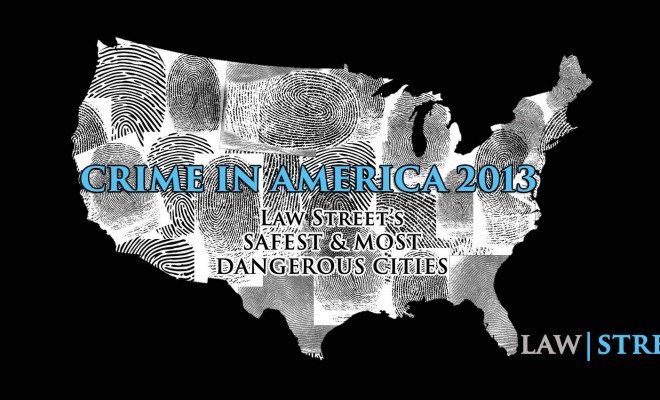
Crime
Why We Rank: The Public’s Right to Know
America is a nation of lists. We rate and rank colleges and universities, hospitals, school systems, governmental entities, college football teams, movies, songs (with a bullet), and just about anything else that matters to us, from the frivolous to the most serious.
And crime is one rating that really matters to all of us.
Law Street’s Crime in America utilizes the FBI’s comprehensive collection of crime statistics from 286 American cities to provide a valuable perspective on personal safety in the United States. The FBI releases these statistics annually, and in doing so it performs a significant public service. We at Law Street are engaged in a journalistic service of our own by analyzing and further disseminating the FBI’s results.
If the past is a guide, our Crime in America rankings will be met with criticism by cities with high crime rates and welcomed by those deemed safest. Scholars who rely on the FBI data as the starting point for their own analyses will nonetheless register their objections. Even the FBI hasn’t been spared this criticism, to the point where the agency now even publishes its own disclaimer. We, too, repeat the FBI’s disclaimer.
Criminologists have received millions of dollars from the federal government in recent years to tell the FBI how it could do a better job of crime data gathering and dissemination – you can read one such report for yourself and see whether it is worth the $4.5 million that the Justice Department paid for it. Looking at that report, one thing that stands out is that the researchers could not easily come to terms with how to make the FBI’s reporting better or more meaningful. And that is not surprising, because crime is as much about perception as it is about reality. A city with some very safe streets may still rank among the most dangerous overall. And although rankings alone cannot tell the whole story, there is still a certain validity to them from a purely qualitative level. Where do you feel safer: strolling the streets of Flint, or Irvine?
In the end, the rankings are what they are – imperfect measures, but illuminating nevertheless. And although some cities may argue against them in order to protect tourism dollars – a few years ago, St. Louis business interests spent $500,000 on a PR campaign against the crime rankings – those same cities also use the rankings to their advantage, to argue for more resources with which to fight such high levels of crime. In fact, that is exactly what is happening in St. Louis. Once ranked Most Dangerous, it was the only city in the Top 10 this year where violent crime significantly dropped.
Acknowledging the limitations of the FBI data doesn’t mean the agency’s reporting is without great value. In fact, the crime data gathered by the FBI’s Uniform Crime Reporting Program is used by states and localities to target crime-fighting resources, and by the federal government to direct billions of dollars in federal taxpayer dollars to local police forces who urgently need the funding. Without the FBI’s crime data, such federal programs could not exist; crime-fighting accountability would be weakened; and the public would be denied its right to know. That is why we rank.
Click here to read more Crime in America coverage.








Comments